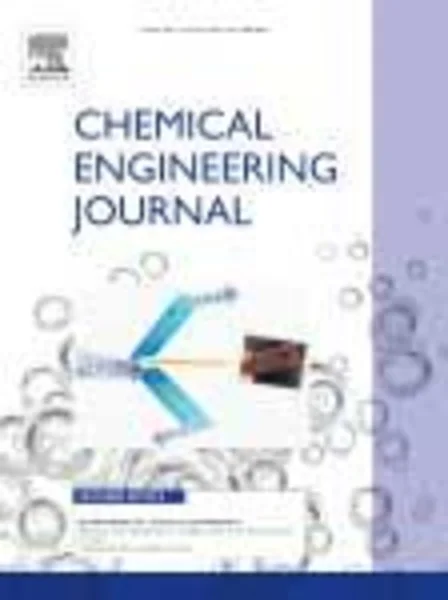-
comparative photocatalytic degradation of estrone in water by zno and tio2 under artificial uva and solar irradiation
جزئیات بیشتر مقاله- تاریخ ارائه: 1392/01/01
- تاریخ انتشار در تی پی بین: 1392/01/01
- تعداد بازدید: 547
- تعداد پرسش و پاسخ ها: 0
- شماره تماس دبیرخانه رویداد: -
zinc oxide (zno) was studied as a photocatalyst under artificial ultraviolet (uv) and solar irradiation for degradation of estrone, a ubiquitous micropollutant widely detected in treated effluent from sewage treatment facilities. despite its lower specific surface area and larger agglomerate size in water, zno enabled significantly more rapid estrone degradation in water under artificial uva irradiation compared to the benchmark photocatalyst, aeroxide® titanium dioxide p25 (p25 tio2). dissolution of zno photocatalyst, predominantly driven by its aqueous solubility, occurred during the photocatalytic degradation process which could be mitigated by ph adjustment. solar irradiation was found to be a highly effective uv source for estrone photocatalytic degradation using either zno or p25 tio2. previous comparative studies on zno and tio2 photocatalysts were reviewed, and the origin of the superior performance of zno under artificial uva irradiation was investigated. diffuse reflectance spectroscopy measurements showed that zno exhibited markedly higher uv absorbance than p25 tio2 within the wavelength range of 320–385 nm, which supports the observation that zno showed evidently better performance than p25 tio2 for estrone degradation under weak artificial uva irradiation. furthermore, a detailed mechanism was proposed on the role of intrinsic defects during zno optical excitation and charge transfer process, and its potential effect on zno surface redox reactions. the mechanism was supported by the observation that higher levels of hydrogen peroxide were generated in uv-irradiated zno suspension in the absence of added electron donors, suggesting that the photocatalytic activity of zno may be enhanced by an effective charge separation mechanism induced by its intrinsic defects.
مقالات جدیدترین رویدادها
-
استفاده از تحلیل اهمیت-عملکرد در ارائه الگوی مدیریت خلاقیت سازمانی و ارائه راهکار جهت بهبود
-
بررسی تاثیر ارزش وجوه نقد مازاد بر ساختار سرمایه شرکت های پذیرفته شده در بورس اوراق بهادار تهران
-
بررسی تأثیر سطح افشای ریسک بر قرارداد بدهی شرکت های پذیرفته شده در بورس اوراق بهادار تهران
-
بررسی تأثیر رتبه بندی اعتباری مبتنی بر مدل امتیاز بازار نوظهور بر نقد شوندگی سهام با تأکید بر خصوصی سازی شرکت ها
-
تأثیر آمیخته بازاریابی پوشاک ایرانی بر تصویر ذهنی مشتری پوشاک ایرانی (هاکوپیان)
-
شبیه سازی تبخیر با استفاده از مدل های فازی عصبی و مقایسه آن با مدل های سری زمانی (مطالعه موردی: دشت جم)
-
کاربرد جدول عمر در برآورد طول عمر و عوامل موثر بر آن در سرطان مری
-
تأثیر تحریک الکتریکی با فرکانس پایین بر اکتساب کیندلینگ و انتقال سیناپسی در شکنج دندانه دار موش صحرایی
-
گزارش یک مورد سندرم نورولپتیک بدخیم ناشی از مصرف ریسپریدون در افراد با ریسک پذیری پایین
-
ranking of the competitive service quality factors using fahp and fuzzy topsis techniques
مقالات جدیدترین ژورنال ها
-
مدیریت و بررسی افسردگی دانش آموزان دختر مقطع متوسطه دوم در دروان کرونا در شهرستان دزفول
-
مدیریت و بررسی خرد سیاسی در اندیشه ی فردوسی در ادب ایران
-
واکاوی و مدیریت توصیفی قلمدان(جاکلیدی)ضریح در موزه آستان قدس رضوی
-
بررسی تاثیر خلاقیت، دانش و انگیزه کارکنان بر پیشنهادات نوآورانه کارکنان ( مورد مطالعه: هتل های 3 و 4 ستاره استان کرمان)
-
بررسی تاثیر کیفیت سیستم های اطلاعاتی بر تصمیم گیری موفق در شرکتهای تولیدی استان اصفهان (مورد مطالعه: مدیران شرکتهای تولیدی استان اصفهان)
-
تأثیر عوامل عاطفی بر واکنش های رفتاری مشتری به تبلیغات شخصی شده آنلاین با نقش میانجی مولفه های نظریه انتخاب عقلایی
-
بررسی نقش تحقیق و توسعه در ویژگی های کارآفرینی کارکنان شرکت ایران خودرو شهر تهران
-
ملاک های سلامت معنوی در پنج ساحت انسان مبتنی بر آموزه های قرآن
-
ارتباط تعامل آمیز سبک زندگی اسلامی با ویژگی های شخصیتی
-
دانشگاه، اخلاق مداری و کارآفرینی




سوال خود را در مورد این مقاله مطرح نمایید :